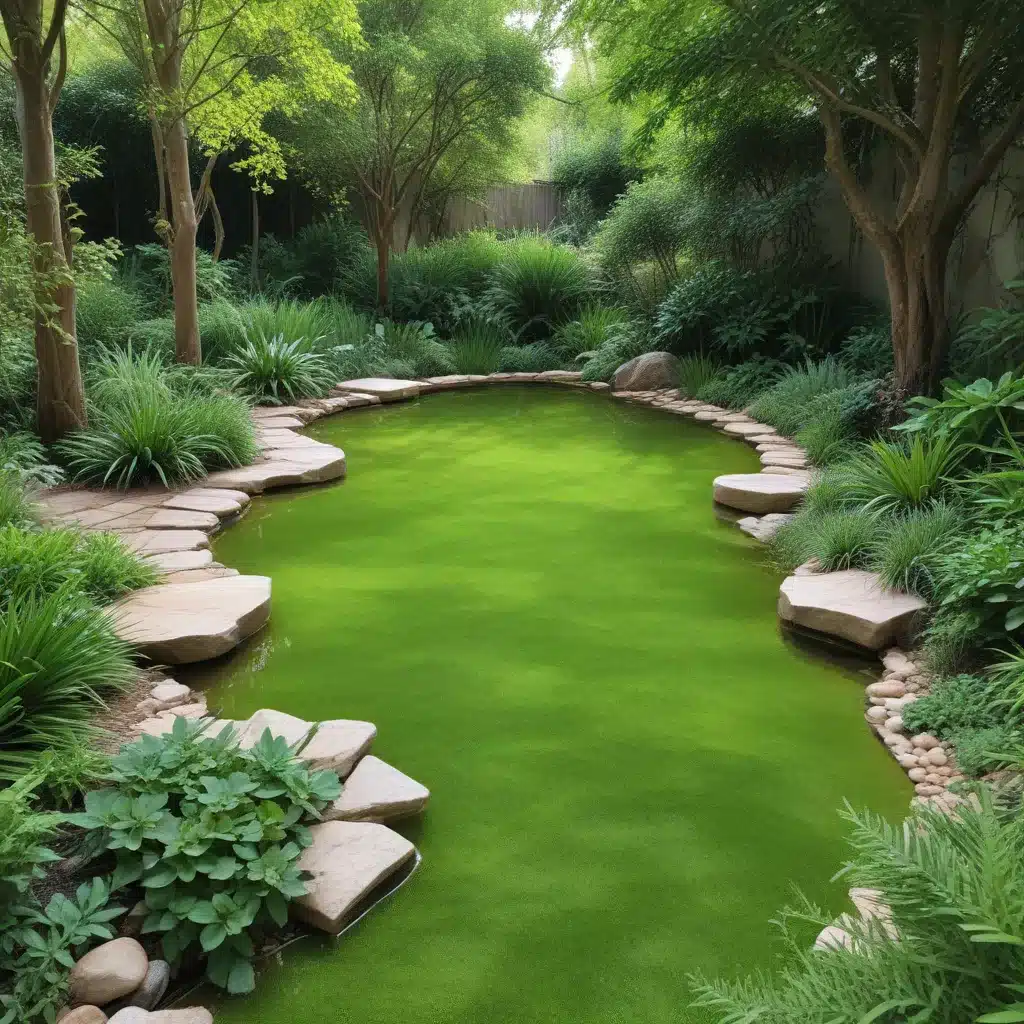
Cultivating a serene, therapeutic landscape can be a powerful strategy for promoting mental well-being and facilitating emotional restoration. At TriCounty Tree Care, we understand the intrinsic link between the natural environment and human health, and we are dedicated to helping our clients harness the rejuvenating potential of thoughtfully designed outdoor spaces.
Therapeutic Landscape Design
Biophilic design principles, which emphasize the inherent human affinity for nature, serve as the foundation for creating calming, restorative landscapes. By strategically integrating natural elements, we can craft environments that foster a sense of tranquility and connection.
Principles of Calming Design
The design of therapeutic landscapes hinges on several key principles. Spatial organization plays a crucial role, with the judicious placement of pathways, seating areas, and focal points encouraging a gentle flow of movement and contemplation. Equally important is the use of natural materials, such as weathered wood, river stones, and natural fibers, which evoke a sense of harmony with the surrounding environment.
Integration of Natural Elements
Carefully selected vegetation, ranging from lush foliage to delicate blooms, can have a profound impact on the overall ambiance of a space. Incorporating water features, such as serene ponds or gentle fountains, can further enhance the soothing qualities of the landscape, providing a calming auditory experience. The strategic placement of shade structures and seating alcoves allows visitors to pause, disconnect from the outside world, and fully immerse themselves in the restorative power of nature.
Sensory Engagement Strategies
Therapeutic landscapes should engage multiple senses to create a truly immersive experience. The careful selection and placement of fragrant plants, such as lavender or jasmine, can trigger olfactory responses that aid in stress reduction. Incorporating textural elements, like soft grasses or rough-hewn sculptures, encourages tactile exploration and sensory grounding. By stimulating the senses, we can cultivate an environment that captivates the mind and soothes the soul.
Mental Health Benefits
Numerous studies have demonstrated the profound impact of natural environments on mental health and emotional well-being. By creating thoughtfully designed therapeutic landscapes, we can harness the power of nature to foster restorative experiences for visitors.
Stress Reduction Mechanisms
Exposure to natural settings has been shown to significantly reduce levels of cortisol, the primary hormone associated with stress. The calming influence of greenery, water, and sensory stimuli helps to alleviate physiological and psychological tension, allowing individuals to achieve a state of relaxation and inner peace.
Cognitive Restoration Processes
Spending time in therapeutic landscapes can also aid in the restoration of cognitive faculties. The soft fascination evoked by natural elements, such as the gentle sway of leaves or the ebb and flow of a stream, helps to reduce mental fatigue and improve attention span. This cognitive rejuvenation can enhance problem-solving abilities, creativity, and overall mental clarity.
Emotional Rejuvenation Outcomes
In addition to stress reduction and cognitive restoration, therapeutic landscapes can foster a profound sense of emotional well-being. The connection to nature and the opportunity for self-reflection can help individuals to achieve a state of mindfulness and emotional balance, leading to increased feelings of joy, contentment, and overall life satisfaction.
Retreat Planning Considerations
When designing a therapeutic landscape for a restorative retreat, there are several key factors to consider to ensure a truly transformative experience.
Site Selection Criteria
The choice of location is crucial, as the natural features and surrounding environment can greatly influence the overall ambiance and therapeutic potential of the space. Factors such as topography, access to water sources, and the presence of mature vegetation should all be carefully evaluated.
Architectural Design Approaches
The architectural elements of a retreat, including the buildings, structures, and pathways, should seamlessly integrate with the natural landscape. Minimalist, biophilic design approaches that emphasize natural materials, large windows, and a harmonious flow between indoor and outdoor spaces can further enhance the restorative qualities of the environment.
Amenity Programming Options
In addition to the landscape design, the programming and amenities offered at a restorative retreat can significantly contribute to the overall therapeutic experience. Wellness-focused activities, such as guided meditation, yoga, and nature-based therapies, can provide visitors with tools to cultivate mindfulness and emotional resilience. Complementary services, like spa treatments and holistic health consultations, can further support the rejuvenation process.
Therapeutic Landscape Trends
As the awareness of the mental health benefits of natural environments continues to grow, the field of therapeutic landscape design is witnessing several exciting advancements and innovations.
Emerging Design Innovations
Cutting-edge virtual reality and augmented reality technologies are being explored to create immersive, digitally-enhanced therapeutic landscapes, offering new ways for individuals to experience the restorative power of nature, even in urban settings. Additionally, the integration of smart technologies, such as responsive lighting and interactive water features, can further enhance the sensory engagement and personalization of therapeutic landscapes.
Sustainable Landscape Practices
Embracing sustainable landscape practices, such as the use of native plant species, water-efficient irrigation systems, and biophilic design principles, not only benefits the environment but also aligns with the holistic ethos of therapeutic landscapes. By prioritizing ecological stewardship, we can create spaces that are both restorative and environmentally responsible.
Evidence-Based Design Applications
As the scientific understanding of the relationship between nature and mental health continues to evolve, evidence-based design approaches are becoming increasingly influential in the creation of therapeutic landscapes. Designers and landscape architects are leveraging empirical research to inform their decision-making, ensuring that the resulting spaces are optimized for promoting mental well-being and emotional restoration.
At TriCounty Tree Care, we are committed to helping our clients harness the power of nature to create restorative retreats that foster mental rejuvenation and overall well-being. By integrating the principles of therapeutic landscape design, we can transform ordinary outdoor spaces into calming, tranquil havens that inspire mindfulness, reduce stress, and cultivate emotional balance. Reach out to our team of experts to learn more about how we can assist you in crafting your own restorative retreat.


